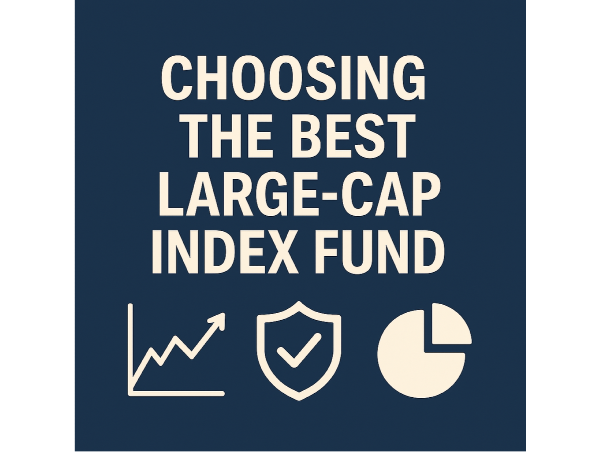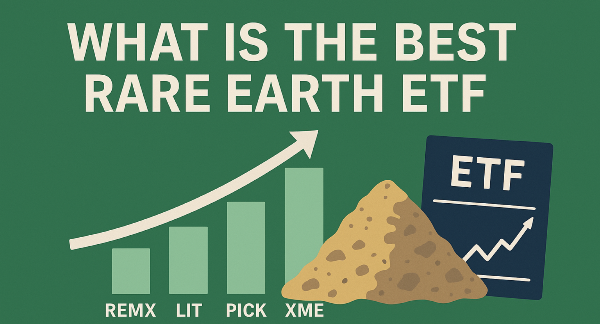Introduction
Large-cap index funds provide investors with diversified exposure to well-established companies, making them a cornerstone of many long-term investment strategies. These funds track major indexes such as the S&P 500, offering a cost-effective way to participate in market growth while minimizing individual stock risk. Selecting the right fund depends on financial goals, risk tolerance, and investment horizon, as different funds vary in expense ratios, sector allocations, and dividend yields. Understanding these distinctions helps investors optimize their portfolios and align their strategies with broader market trends.
Understanding Large-Cap Index Funds
Large-cap index funds are investment vehicles designed to track the performance of major stock indexes composed of well-established companies. These funds follow a passive investing strategy, meaning they replicate the holdings of a specific index rather than relying on active stock selection by fund managers. By mirroring the composition of large-cap indexes, these funds provide investors with broad market exposure while minimizing the risks associated with individual stock selection. Since large-cap stocks tend to be financially stable and less volatile than smaller-cap stocks, index funds provide a reliable foundation for long-term investment strategies.
One of the primary advantages of large-cap index investing is its cost efficiency compared to actively managed funds. Index funds typically have lower expense ratios because they do not require frequent trading or extensive research by fund managers. Additionally, studies have shown that passive index funds often outperform actively managed funds over the long term due to their lower fees and consistent market exposure. Tracking large-cap indexes allows these funds to offer diversified exposure to leading companies across various industries.
Expense Ratios and Fund Costs
Low expense ratios are crucial for maximizing investment returns, as they directly affect the net gains of a portfolio. Since index funds follow a passive investment strategy, they typically have lower fees compared to actively managed funds. Investors seeking cost-efficient strategies often prioritize funds with minimal fees to optimize long-term performance. Comparing fees across major large-cap index funds reveals significant differences in cost structures.
Funds such as the Vanguard S&P 500 ETF and Fidelity 500 Index Fund offer some of the lowest expense ratios in the industry, making them attractive options for cost-conscious investors. In contrast, actively managed funds tend to have higher fees due to frequent trading and research expenses.
Liquidity and Trading Considerations
Fund liquidity plays a crucial role in investment efficiency, as it determines how easily shares can be bought or sold without significantly impacting their price. Large-cap index funds generally exhibit high liquidity due to their substantial trading volumes, allowing investors to enter and exit positions with minimal friction. Daily trading volumes provide insight into market activity, with higher volumes indicating greater liquidity and smoother transactions.
Bid-ask spreads influence transaction costs by representing the difference between the highest price a buyer is willing to pay and the lowest price a seller is willing to accept. Narrow bid-ask spreads indicate higher liquidity, reducing the cost of buying and selling shares. Conversely, wider spreads can lead to increased trading expenses, particularly in volatile market conditions. Efficient trade execution requires careful consideration of liquidity, spreads, and market conditions.
Sector Allocation and Portfolio Diversification
Sector allocation plays a crucial role in portfolio diversification, influencing risk exposure and overall investment performance. Large-cap index funds typically distribute holdings across multiple sectors, with technology, healthcare, and financials often carrying significant weight. The S&P 500, for example, has a substantial allocation to technology stocks, reflecting the dominance of companies like Apple and Microsoft.
Sector concentration can introduce risks, particularly when a few industries dominate an index. Funds heavily weighted in technology or financials may experience heightened volatility during sector-specific downturns. Diversification across multiple sectors helps mitigate these risks, ensuring exposure to industries with varying growth cycles and economic resilience.
Dividend Yields and Income Potential
Large-cap index funds often include companies with strong dividend-paying histories, providing investors with a reliable income stream. These funds track indexes composed of well-established firms that distribute dividends regularly, making them attractive for income-focused investors. Dividend distributions vary based on company earnings, sector performance, and broader market conditions, influencing the overall yield of an index fund. Dividend reinvestment plays a crucial role in maximizing long-term returns by compounding earnings over time.
Many large-cap index funds offer automatic reinvestment options. Over extended periods, reinvestment can significantly boost total returns, making it a valuable approach for investors focused on wealth accumulation. Comparing funds based on dividend yields and payout consistency helps investors select the most suitable options for their financial goals. Some funds prioritize high dividend yields, while others focus on dividend growth and stability.
Evaluating Performance and Benchmark Tracking
Historical performance trends provide valuable insights into the reliability and growth potential of large-cap index funds. Over time, funds tracking major indexes such as the S&P 500 have demonstrated strong returns, often outperforming actively managed funds due to their low-cost structure and broad market exposure. Investors rely on historical data to assess long-term stability, comparing fund performance across different market cycles.
Tracking errors can impact the reliability of index funds, affecting their ability to accurately replicate benchmark performance. While most large-cap index funds maintain minimal tracking errors, deviations can occur, influencing investor returns. Risk-adjusted returns help investors evaluate the efficiency of large-cap index funds by considering both performance and volatility. Metrics such as the Sharpe ratio and alpha measure how well a fund compensates investors for the risks taken. Funds with higher risk-adjusted returns offer better stability and profitability, making them attractive for long-term investment strategies.
Risk Factors and Market Exposure
Large-cap index funds are subject to market risks that can impact their performance over time. Economic downturns, geopolitical events, and shifts in investor sentiment can lead to fluctuations in stock prices, affecting fund returns. While large-cap stocks tend to be more stable than smaller-cap companies, they are not immune to broader market volatility. Investors should be aware of these risks and consider strategies to manage exposure effectively.
Mitigating risks while maintaining large-cap exposure requires a diversified investment approach. Investors can balance their portfolios by incorporating funds with varying sector allocations, reducing reliance on any single industry. Additionally, selecting funds with lower expense ratios and strong historical performance can enhance long-term stability.
Choosing the Best Large-Cap Index Fund for Your Portfolio
Selecting the best large-cap index fund requires evaluating several key factors, including expense ratios, fund composition, and historical performance. Investors should prioritize funds with low fees to maximize returns over time, as high expense ratios can erode gains. Additionally, understanding sector allocations within a fund helps determine whether it aligns with market trends and diversification needs.
Liquidity and tracking accuracy are also important considerations, ensuring smooth transactions and reliable benchmark replication. Evaluating personal financial objectives ensures that the chosen fund supports long-term investment strategies.
Conclusion
Choosing the best large-cap index fund requires careful evaluation of key factors, including expense ratios, sector allocation, liquidity, and dividend yields. While large-cap funds provide diversified exposure to industry-leading companies, their performance and risk profiles can vary based on fund composition and economic conditions.
Investors should align fund selection with their financial goals and risk tolerance, ensuring a balanced portfolio that optimizes stability and long-term growth. By considering sector concentration, tracking accuracy, and cost efficiency, individuals can make informed decisions that enhance their investment strategies and maximize returns.




























Introduction
Large-cap index funds provide investors with diversified exposure to well-established companies, making them a cornerstone of many long-term investment strategies. These funds track major indexes such as the S&P 500, offering a cost-effective way to participate in market growth while minimizing individual stock risk. Selecting the right fund depends on financial goals, risk tolerance, and investment horizon, as different funds vary in expense ratios, sector allocations, and dividend yields. Understanding these distinctions helps investors optimize their portfolios and align their strategies with broader market trends.
Understanding Large-Cap Index Funds
Large-cap index funds are investment vehicles designed to track the performance of major stock indexes composed of well-established companies. These funds follow a passive investing strategy, meaning they replicate the holdings of a specific index rather than relying on active stock selection by fund managers. By mirroring the composition of large-cap indexes, these funds provide investors with broad market exposure while minimizing the risks associated with individual stock selection. Since large-cap stocks tend to be financially stable and less volatile than smaller-cap stocks, index funds provide a reliable foundation for long-term investment strategies.
One of the primary advantages of large-cap index investing is its cost efficiency compared to actively managed funds. Index funds typically have lower expense ratios because they do not require frequent trading or extensive research by fund managers. Additionally, studies have shown that passive index funds often outperform actively managed funds over the long term due to their lower fees and consistent market exposure. Tracking large-cap indexes allows these funds to offer diversified exposure to leading companies across various industries.
Expense Ratios and Fund Costs
Low expense ratios are crucial for maximizing investment returns, as they directly affect the net gains of a portfolio. Since index funds follow a passive investment strategy, they typically have lower fees compared to actively managed funds. Investors seeking cost-efficient strategies often prioritize funds with minimal fees to optimize long-term performance. Comparing fees across major large-cap index funds reveals significant differences in cost structures.
Funds such as the Vanguard S&P 500 ETF and Fidelity 500 Index Fund offer some of the lowest expense ratios in the industry, making them attractive options for cost-conscious investors. In contrast, actively managed funds tend to have higher fees due to frequent trading and research expenses.
Liquidity and Trading Considerations
Fund liquidity plays a crucial role in investment efficiency, as it determines how easily shares can be bought or sold without significantly impacting their price. Large-cap index funds generally exhibit high liquidity due to their substantial trading volumes, allowing investors to enter and exit positions with minimal friction. Daily trading volumes provide insight into market activity, with higher volumes indicating greater liquidity and smoother transactions.
Bid-ask spreads influence transaction costs by representing the difference between the highest price a buyer is willing to pay and the lowest price a seller is willing to accept. Narrow bid-ask spreads indicate higher liquidity, reducing the cost of buying and selling shares. Conversely, wider spreads can lead to increased trading expenses, particularly in volatile market conditions. Efficient trade execution requires careful consideration of liquidity, spreads, and market conditions.
Sector Allocation and Portfolio Diversification
Sector allocation plays a crucial role in portfolio diversification, influencing risk exposure and overall investment performance. Large-cap index funds typically distribute holdings across multiple sectors, with technology, healthcare, and financials often carrying significant weight. The S&P 500, for example, has a substantial allocation to technology stocks, reflecting the dominance of companies like Apple and Microsoft.
Sector concentration can introduce risks, particularly when a few industries dominate an index. Funds heavily weighted in technology or financials may experience heightened volatility during sector-specific downturns. Diversification across multiple sectors helps mitigate these risks, ensuring exposure to industries with varying growth cycles and economic resilience.
Dividend Yields and Income Potential
Large-cap index funds often include companies with strong dividend-paying histories, providing investors with a reliable income stream. These funds track indexes composed of well-established firms that distribute dividends regularly, making them attractive for income-focused investors. Dividend distributions vary based on company earnings, sector performance, and broader market conditions, influencing the overall yield of an index fund. Dividend reinvestment plays a crucial role in maximizing long-term returns by compounding earnings over time.
Many large-cap index funds offer automatic reinvestment options. Over extended periods, reinvestment can significantly boost total returns, making it a valuable approach for investors focused on wealth accumulation. Comparing funds based on dividend yields and payout consistency helps investors select the most suitable options for their financial goals. Some funds prioritize high dividend yields, while others focus on dividend growth and stability.
Evaluating Performance and Benchmark Tracking
Historical performance trends provide valuable insights into the reliability and growth potential of large-cap index funds. Over time, funds tracking major indexes such as the S&P 500 have demonstrated strong returns, often outperforming actively managed funds due to their low-cost structure and broad market exposure. Investors rely on historical data to assess long-term stability, comparing fund performance across different market cycles.
Tracking errors can impact the reliability of index funds, affecting their ability to accurately replicate benchmark performance. While most large-cap index funds maintain minimal tracking errors, deviations can occur, influencing investor returns. Risk-adjusted returns help investors evaluate the efficiency of large-cap index funds by considering both performance and volatility. Metrics such as the Sharpe ratio and alpha measure how well a fund compensates investors for the risks taken. Funds with higher risk-adjusted returns offer better stability and profitability, making them attractive for long-term investment strategies.
Risk Factors and Market Exposure
Large-cap index funds are subject to market risks that can impact their performance over time. Economic downturns, geopolitical events, and shifts in investor sentiment can lead to fluctuations in stock prices, affecting fund returns. While large-cap stocks tend to be more stable than smaller-cap companies, they are not immune to broader market volatility. Investors should be aware of these risks and consider strategies to manage exposure effectively.
Mitigating risks while maintaining large-cap exposure requires a diversified investment approach. Investors can balance their portfolios by incorporating funds with varying sector allocations, reducing reliance on any single industry. Additionally, selecting funds with lower expense ratios and strong historical performance can enhance long-term stability.
Choosing the Best Large-Cap Index Fund for Your Portfolio
Selecting the best large-cap index fund requires evaluating several key factors, including expense ratios, fund composition, and historical performance. Investors should prioritize funds with low fees to maximize returns over time, as high expense ratios can erode gains. Additionally, understanding sector allocations within a fund helps determine whether it aligns with market trends and diversification needs.
Liquidity and tracking accuracy are also important considerations, ensuring smooth transactions and reliable benchmark replication. Evaluating personal financial objectives ensures that the chosen fund supports long-term investment strategies.
Conclusion
Choosing the best large-cap index fund requires careful evaluation of key factors, including expense ratios, sector allocation, liquidity, and dividend yields. While large-cap funds provide diversified exposure to industry-leading companies, their performance and risk profiles can vary based on fund composition and economic conditions.
Investors should align fund selection with their financial goals and risk tolerance, ensuring a balanced portfolio that optimizes stability and long-term growth. By considering sector concentration, tracking accuracy, and cost efficiency, individuals can make informed decisions that enhance their investment strategies and maximize returns.